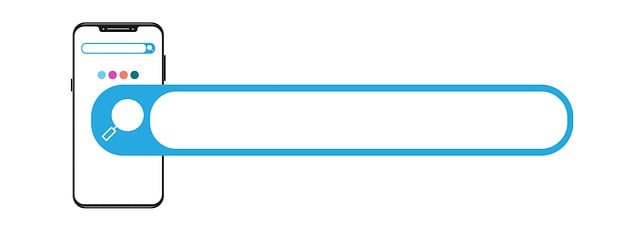In the dynamic world of e-commerce, a chatbot's success hinges on its ability to interpret complex product-focused search engines. To excel, chatbots must decipher user queries as expressions of intent and context, leveraging advanced NLP techniques and integrating robust e-commerce search engine APIs. Choosing the right platform is key; look for solutions that offer seamless integration, multi-language support, and AI learning. Effective conversational flows, designed with potential user queries in mind, ensure accurate responses and enhance customer satisfaction. Integration through user-friendly tools with pre-built templates simplifies the process, enabling real-time interactions and personalized recommendations. Rigorous testing and continuous training with platform data are essential for optimal performance, mirroring pre-opening inspections in physical stores.
Building a chatbot for your ecommerce platform can significantly enhance customer experience and drive sales. This guide walks you through essential steps, from understanding the unique requirements of an ecommerce search engine to optimizing your chatbot for seamless integration and maximum effectiveness. Learn how to choose the right tools, design intuitive conversational flows, and continually train and refine your chatbot to deliver personalized, efficient support.
- Understanding Ecommerce Search Engine Requirements
- Choosing the Right Chatbot Platform and Tools
- Designing Conversational Flows for Effective Interactions
- Integrating Chatbots with Ecommerce Platforms Seamlessly
- Testing, Training, and Optimizing Your Ecommerce Chatbot
Understanding ecommerce search engine Requirements

In the dynamic landscape of ecommerce, a chatbot’s effectiveness hinges on its ability to navigate and understand complex search engine requirements. Ecommerce search engines differ from traditional web search engines in their focus on product-specific data, such as attributes, categories, reviews, and pricing. A well-built chatbot must be adept at deciphering these nuances to deliver accurate and relevant results. It should be able to interpret user queries not just as keywords but as expressions reflecting intent and context—for instance, “best running shoes under $100” implies a specific product category and price range.
To achieve this, developers need to ensure the chatbot is integrated with robust ecommerce search engine APIs that facilitate seamless access to product information. This involves mapping user queries to available data fields and ensuring the chatbot’s responses align with the search engine’s ranking algorithms, which often consider factors like customer reviews, sales history, and product updates. Additionally, implementing advanced natural language processing (NLP) techniques allows the chatbot to understand and adapt to various user inputs, providing a more intuitive and satisfying shopping experience.
Choosing the Right Chatbot Platform and Tools

When building a chatbot for ecommerce, selecting the right platform and tools is a critical first step. Look for solutions that integrate seamlessly with your existing ecommerce search engine, offering features like natural language processing (NLP) to understand customer queries and dynamic product recommendations based on user interactions. Popular options include platforms that support customization, allowing you to tailor responses and branding to match your store’s personality.
Consider tools that provide analytics and insights into chatbot performance, enabling you to make data-driven decisions. Advanced features like multi-language support and AI-driven learning capabilities can significantly enhance the customer experience, making your ecommerce chatbot more effective in driving sales and improving user satisfaction.
Designing Conversational Flows for Effective Interactions

Designing Conversational flows is a pivotal step in building an effective chatbot for ecommerce. It involves creating a structured yet flexible path that guides users through their interactions with the bot, much like navigating an intuitive shopping experience. Start by mapping out potential user queries and desired outcomes. For instance, a customer might ask about product availability, pricing, or specific features. Your conversational flow should then branch out to accommodate these varying requests, ensuring the chatbot provides accurate and helpful responses each time.
Consider using interactive menus, clear prompts, and branching logic to enhance user experience. By designing for natural language variations and potential mistakes, you can make your chatbot more user-friendly. For example, incorporating synonyms and context-aware understanding allows the bot to handle different phrasing for the same query. Remember, a well-designed conversational flow is key to boosting customer satisfaction and driving conversions in your ecommerce platform, making it an indispensable element for any successful chatbot implementation.
Integrating Chatbots with Ecommerce Platforms Seamlessly

Integrating a chatbot into your ecommerce platform is a straightforward process thanks to the many user-friendly, third-party tools available. These platforms offer pre-built chatbot templates designed specifically for enhancing customer engagement on ecommerce sites. By seamlessly integrating with popular ecommerce search engines, chatbots can quickly learn and adapt to your product catalog, enabling them to provide accurate, contextually relevant answers to customer queries in real time.
This integration allows shoppers to interact naturally with the chatbot, asking questions about product details, availability, pricing, or even receiving personalized recommendations. The chatbot draws upon its access to your ecommerce data, including product listings and customer interactions, to deliver intelligent, tailored responses that boost customer satisfaction and drive sales.
Testing, Training, and Optimizing Your Ecommerce Chatbot

After developing your ecommerce chatbot, rigorous testing is essential. Just like a physical store wouldn’t open its doors without thorough inspections, your chatbot needs to be refined through extensive trials before it interacts with real customers. Test its responses across various scenarios, user queries, and product lines. This process ensures the chatbot accurately understands customer requests and provides relevant answers.
Training involves feeding your chatbot vast amounts of data from your ecommerce platform, including product descriptions, customer reviews, and FAQs. The more diverse and comprehensive this training data is, the better equipped the chatbot will be to handle a wide range of user inquiries. Regularly update and refine this training material to keep up with changes in products, promotions, or customer preferences. Continuous optimization based on performance metrics like response accuracy, customer satisfaction ratings, and engagement levels is key to enhancing your ecommerce chatbot’s effectiveness.
Building a chatbot for e-commerce involves understanding the unique requirements of an ecommerce search engine, selecting the right platform and tools, designing intuitive conversational flows, seamless integration with existing platforms, thorough testing, training based on user interactions, and continuous optimization. By following these steps, you can enhance customer experience, improve engagement, and ultimately drive sales in your online store.
